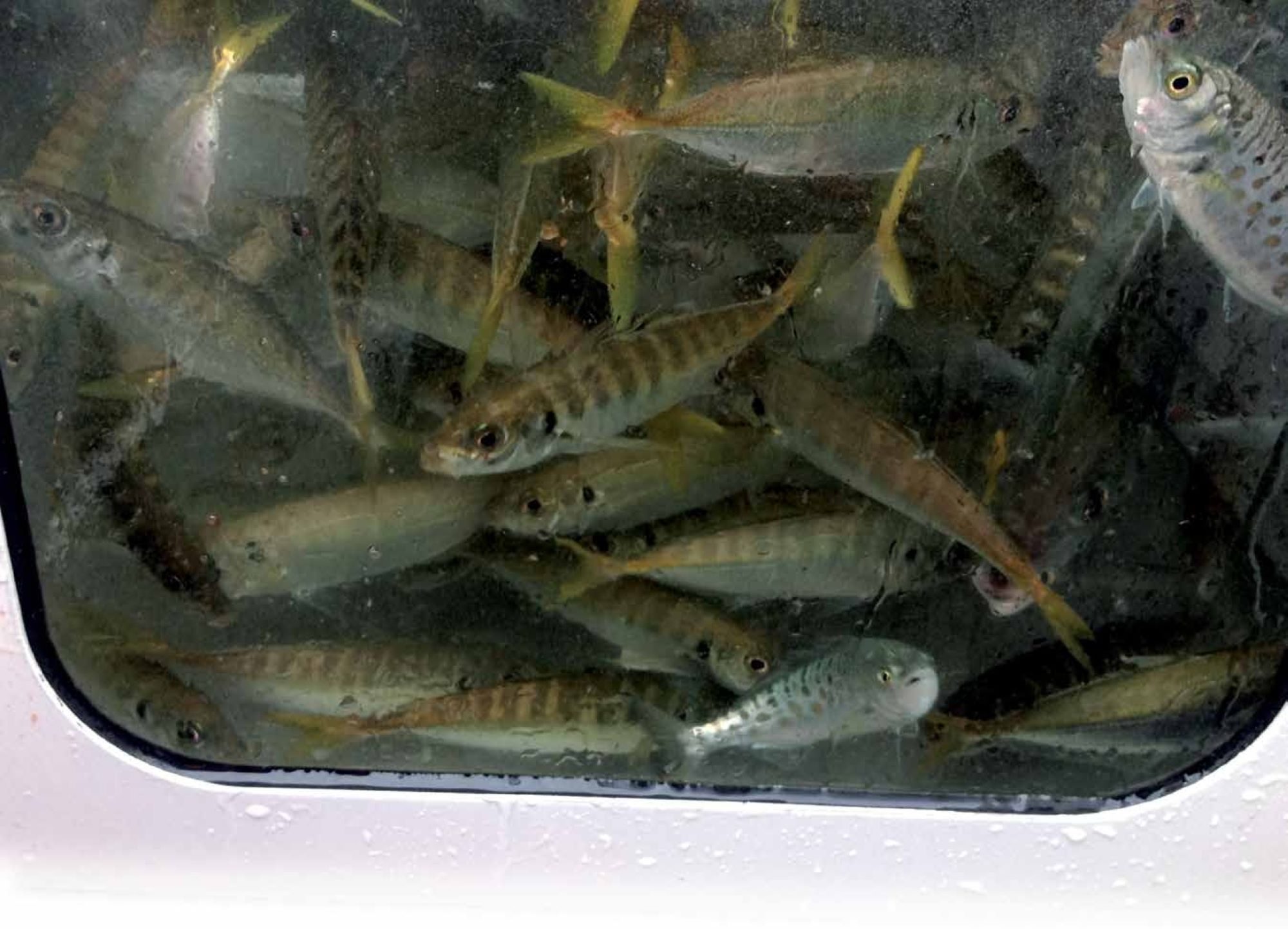

Trolling bibbed minnows is arguably the easiest way to catch kingfish – if you know the basics!
These essential elements include: using suitable tackle, identifying productive trolling areas, and knowing how to set up and get the best from your trolled minnow/s.
SUITABLE TROLLING TACKLE
Gear can be of modest size but must be robust enough to handle 24kg or even 37kg breaking strain line, as plenty of pressure may be required to avoid breaking the line if a hooked fish finds nearby structure. When kingfish break off, there are no winners. You lose an expensive lure, a tasty dish and/ or bragging rights after a tough fight, while the kingfish ends up with a lure in its face, perhaps also trailing line, affecting its long term ability to feed and survive.

Rapala CD18s are hard to beat. This Rapala accounted for a lovely Wellington kingfish. (Photo: NZ Fishing News)
THE ROD
A relatively short (6’/1.83m or less), powerful rod does the job,
providing maximum stopping power and leverage.
Important features include:
• A longish fore-grip to allow an effective, stiff-armed fishfighting stance for greater leverage with less effort.
• A sturdy butt section well-protected by EVA grip material. The butt comes under a lot of pressure when a kingfish hooks up – unprotected butts in metal rod holders can snap.
• A gimbal nock to keep the rod locked in position in the boat’s rod holder, as well as in the rod bucket when fighting a hooked fish.
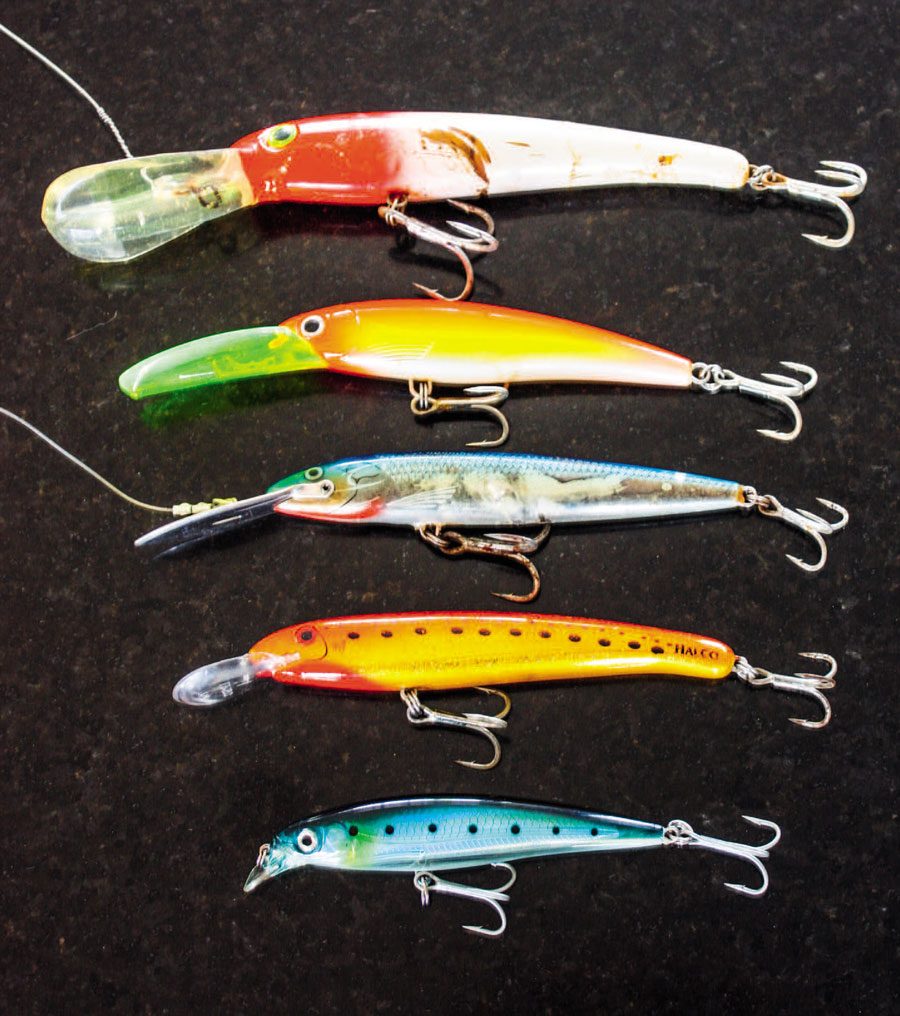
The bigger the minnow’s bib and the shallower its angle, the deeper it will swim
THE REEL
Reels can be spinning or free-spool types, able to handle 24–37kg lines, either GSP braid or nylon monofilament.
Free-spool reels can be star-drag or lever-drag models, but lever-drags allow you to set the drag for the strike and then precisely adjust the drag pressure on the fly while fighting the fish. Altering the drag pressure on a star-drag during the fight is largely a matter of guesswork.
Other prime considerations include:
• Capacity for at least 300m of 24–37kg line. Line can be braid or nylon, but braid cuts through the water better, allowing the trolled lure to get down deeper and making it less likely to ‘flip out’ while trolling.
• When trolling minnow-type lures, reel drags should be set to exert no more than 8–12kg of drag pressure over the rod; any more than this can bend the hooks out.
• Harness lugs allow the use of a harness, making fighting big fish easier and the fishing experience more comfortable.
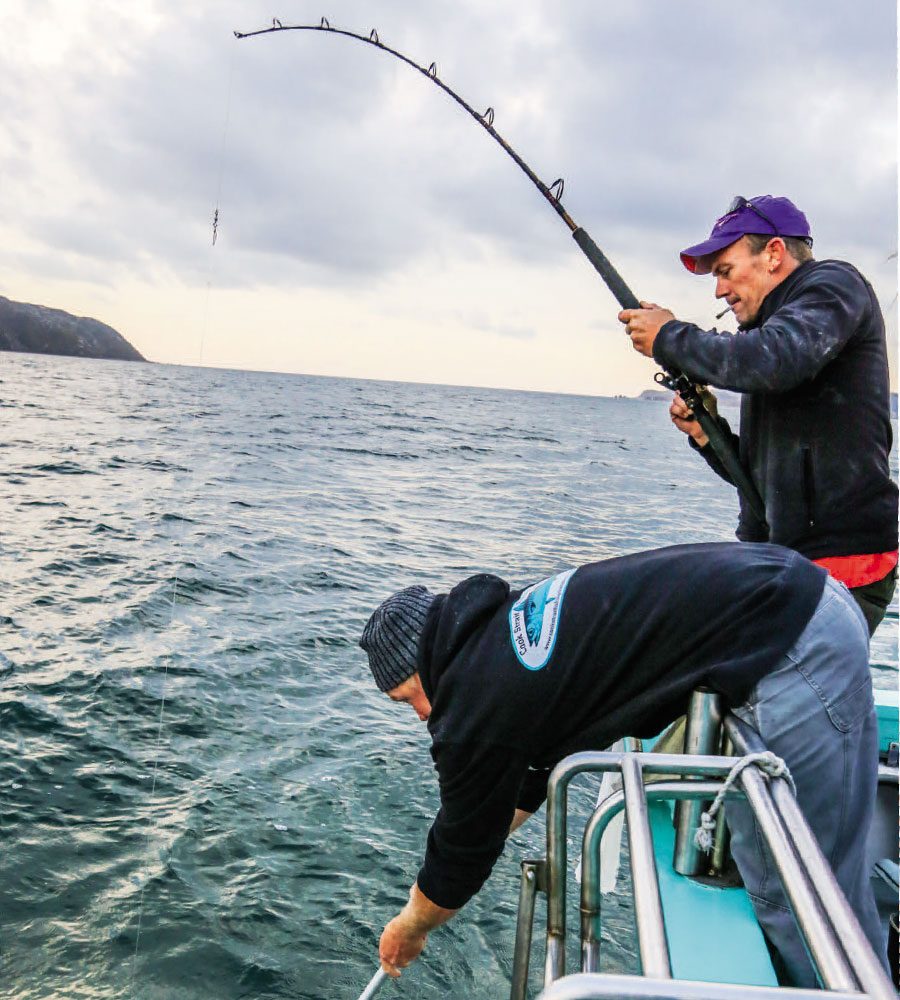
Reasonably short, powerful 24kg rods are suited to trolling large bibbed minnows. (Photo: NZ Fishing News)
TRACE
Trace choice is important.
A thick trace is more affected by water pressure/friction than a thinner one, decreasing the depth of water the lure can reach. It also inhibits the lure’s natural action and makes the trace easier to see. However, go too light with the trace and you’ll experience too many break-offs. I suggest 27kg trace for small to medium-sized minnows and 37–45kg for the larger ones.
A long leader provides greater abrasion protection should the leader rub on rocks or structure. Connecting the trace to the main line via a robust swivel and a couple of uni-knots is fine, but a PR, FG or Albright knot that passes easily through the rod guides is better. If you still want a swivel, rig it just a metre or so from the lure, so you can wind down close to the lure and control the fish at the boat with the rod. No need to grab the leader.
Tie on the minnow with a uni-knot or a Rapala loop knot, or use crimps, rather than attaching it with a snap-clip. A bulky clip interferes with water flow onto the lure, adversely affecting its action. That said, the compact but strong Mustad Fastach clip works well.
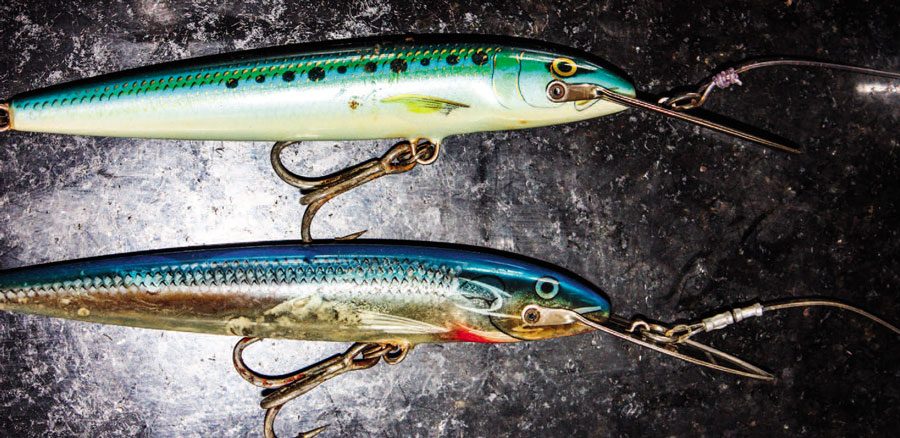
Two options for attaching bibbed minnows.
BIBBED MINNOWS
The best kingfish trolling lures dive down and ‘wobble’ or ‘wiggle’ rather than spin.
Popular colour combinations include fluoro orange-and-gold; blue-and-silver; pink-and-white; green-and-yellow (especially fluorescent versions); and white with a red head. Which colours the fish prefer can change from day to day and hour to hour, so don’t be afraid to experiment.
The size, shape and angle of the lure’s bib determines the depth it runs and the speed at which the lure can be trolled. The bib also plays a big part in creating the overall movement or ‘action’. Basically, the bigger the bib and the shallower (more obtuse) its angle, the deeper the lure is designed to swim, but also the slower the trolling speed it will handle.
Choose a reputable brand of lure armed with high quality single or treble hooks. Treble hooks with their multiple points are potentially dangerous to fish and anglers alike, so using lures designed for single hooks may be to your mutual advantage.
Some lures armed with trebles can successfully be changed over to single hooks, but this sometimes adversely affects the lure’s swimming action and trolling behaviour.
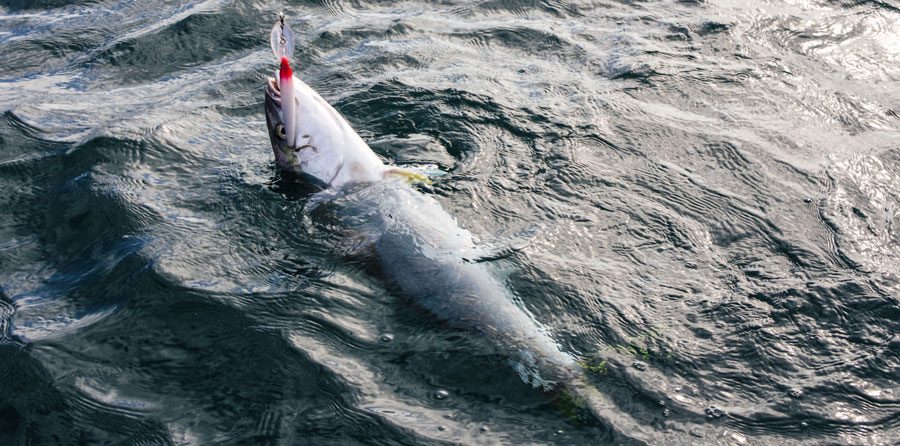
The Mustad Fastach clip is a good option when attaching a bibbed minnow to the line. Most other clips are too bulky, disturbing water flow over the lure’s bib and affecting the minnow’s swimming action.
TROLLING TACTICS
Simply trolling in open water between destinations tends to be a recipe for failure. Kingfish generally inhabit areas of reef and foul bottom, swept by current with baitfish present and a bit of white-water action for cover. For best results, push in as close as is safely possible to rocky coastlines, islands and reefs and also concentrate on trolling the edges of feeding baitfish schools.
Don’t drive the boat through schools of mackerel, trevally and kahawai feeding on krill or small baitfish on the surface, as this will only put the schools down. Instead, keep your distance, skirting around the working fish before straightening up so as to drag the lures past the edge of the work up. Any kingfish shadowing the school will be quick to snap up one of these percieved ‘stragglers’.
The propeller’s turbulence can upset your lure’s natural action, so when setting the lure, carefully lower it into the water to one side of the boat and then release line until the lure’s at least 10m back. Gradually slow the line release before engaging the reel, as a sudden stop can make the lure fly out the water. Set two lures at staggered distances behind the boat – perhaps one around 20–30m and another at 40–50m. Keep in mind that the more line you have out, the more likely a hooked kingfish will find its way to the bottom where it can break you off.
Consider mixing up your trolling spread with lures that swim at different depths – maybe add stick-baits or poppers. These can be spectacularly effective, especially if the angler holds the rod to one side away from the boat and pumps it to make the surface lures bubble and splash.
Always stow a large, soft-rubber mesh landing net on board, along with a decent gaff. The net is used for smaller kings while the gaff is for larger specimens. You can carefully lip-hook kingfish beside the boat and still successfully release them. Otherwise, if you intend to keep a fish, aim for the shoulder near the head so as not to damage good fillet meat. A set of long-nosed pliers safely removes hooks from thrashing fish.
Finally, a plea. Kingfish are big animals that provide plenty of fresh meat. They are delicious eaten fresh, as sashimi or grilled on the barbie, but the meat doesn’t freeze well. So consider sharing one fish among your boat party – certainly no more than two! BNZ



